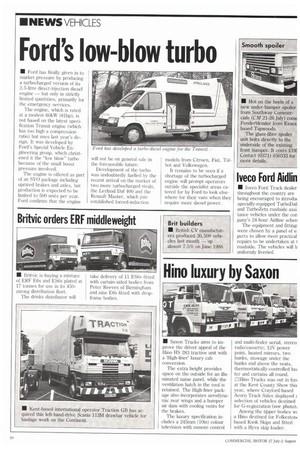Ford's low-blow turbo
Page 10

If you've noticed an error in this article please click here to report it so we can fix it.
• Ford has finally given in to market pressure by producing a turbocharged version of its 2.5-litre direct-injection diesel engine — but only in strictly limited quantities, primarily for the emergency services.
The engine, which is rated at a modest 60kW (81hp), is not based on the latest specification Transit engine (which has too high a compression ratio) but uses last year's design. It was developed by Ford's Special Vehicle Engineering group, which christened it the "low blow" turbo because of the small boost pressure involved.
The engine is offered as part of an SVO package including uprated brakes and axles, but production is expected to be limited to 500 units per year. Ford confirms that the engine will not be on general sale in the foreseeable future.
Development of the turbo was undoubtedly fuelled by the recent arrival on the market of two more turbocharged rivals, the Leyland Daf 400 and the Renault Master, which join established forced-induction models from Citroen, Fiat, Talbot and Volkswagen.
It remains to be seen if a shortage of the turbocharged engine will prompt operators outside the specialist areas catered for by Ford to look elsewhere for their vans when they require more diesel power.




































































































































